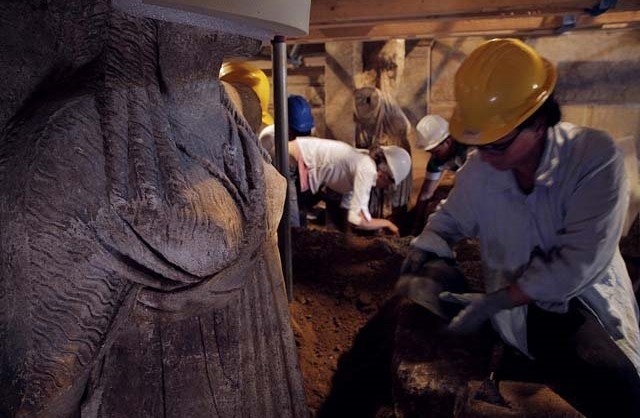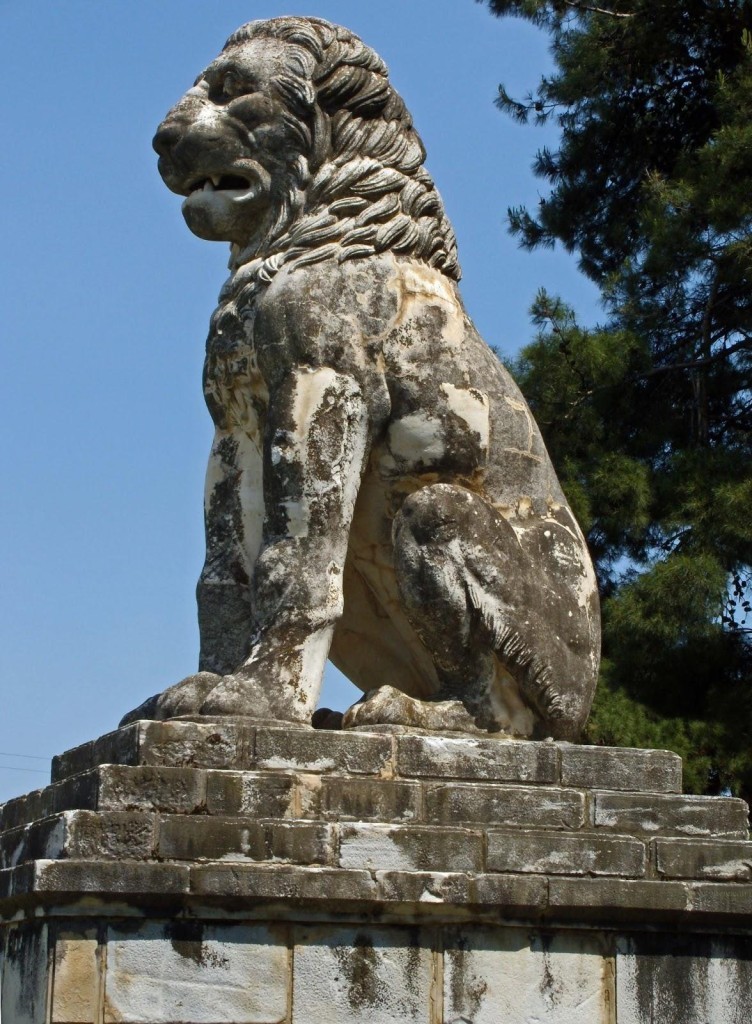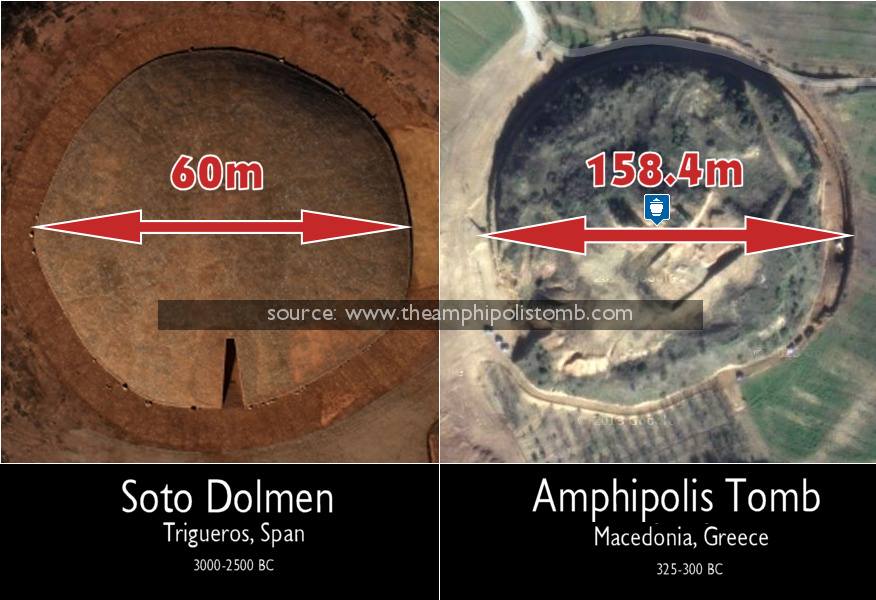Archaeologists are inching their way through the 2,300-year-old tomb at ancient Amphipolis in northern Greece. The two life-size female figures’ bodies, buried in sand, are slowly being unearthed and their intricately-detailed tunics were revealed on Thursday.
The enigma concerning the caryatids deepens as the full bodies are revealed. For instance, the purpose of caryatids in Greek antiquity was to support the entablature above, taking the place of a pillar, but in this case the two figures do not appear to be supporting anything on their head.”The caryatids apparently would have been lightly lifting their chitons with the hand on the external side,” the ministry statement said.
The face of the eastern caryatid and polos (cylindrical “hat” between the figure’s head and the architrave) were found and the pieces of the statue’s face were slowly matched. Work to support the monuments is continuing as more pieces are found.
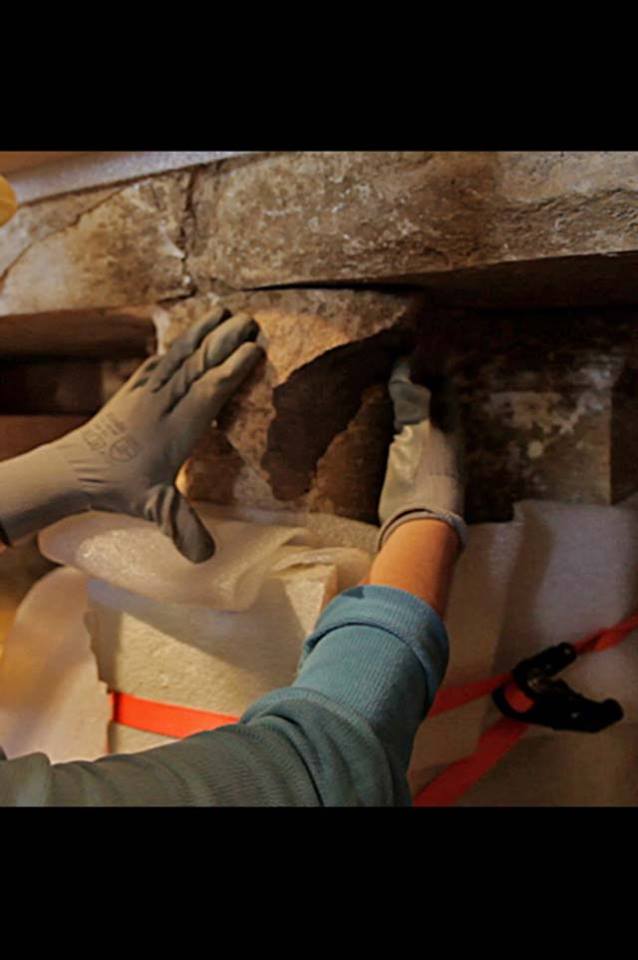
Pieces from the missing face of the eastern Caryatid have been found and have been added to the statue.
Archaeologists are also working on the room directly behind the caryatids that is filled with sand from the nearby Strymon River, deliberately placed there to prevent tomb raiders and robbers from pillaging the tomb.
Speculation is growing in this archaeological soap opera for intellectuals. Are the rumors true that the main chamber is 25 stairs beneath the current floor level? Will the bodies be in golden and ivory-laced caskets and surrounded by treasures that the deceased ancient celebrity wanted to take to the afterlife?
Could a royal woman be buried here?
The caryatids and the sphinx – a symbol of Macedonian queens from the late fourth century BCE – would indicate that a royal woman is buried at the site. Furthermore, no penis has been found on the Lion of Amphipolis that could suggest that the statue depicts a lioness. It is possible that a lioness could be linked with a female royal of great importance.
The question remains as to whether the tomb belonged to Olympias, Alexander the Great’s ambitious mother who was murdered by the relatives of those whose cruel executions she had ordered after she surrendered to Cassander in 316 BCE.
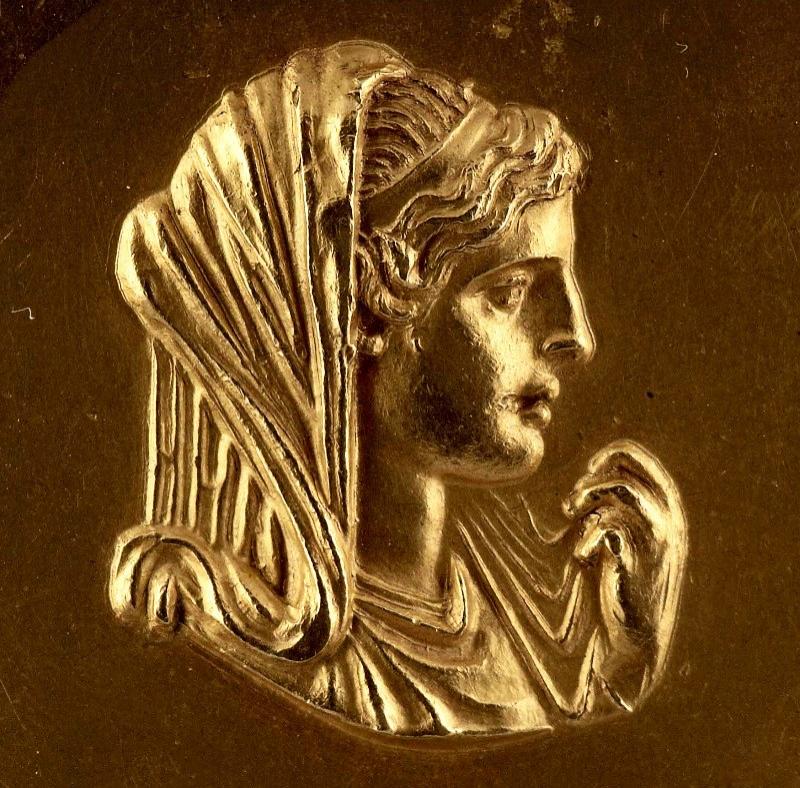
Olympias, Alexander’s mother was notorious for her violence, ambition and power, but she died in disgrace
British antiquities expert Andrew Chugg, known for his research on Alexander the Great, says that the rosettes found in the tomb were similar to the ones that decorated the gold coffin found in the Tomb of Philip. He believes that the queen is buried here even though she died an enemy of the regime in power.
Even so, why would Cassander allow for such a large tomb?
The size
The sheer size of the tomb is ostentatious when compared to others of antiquity –

